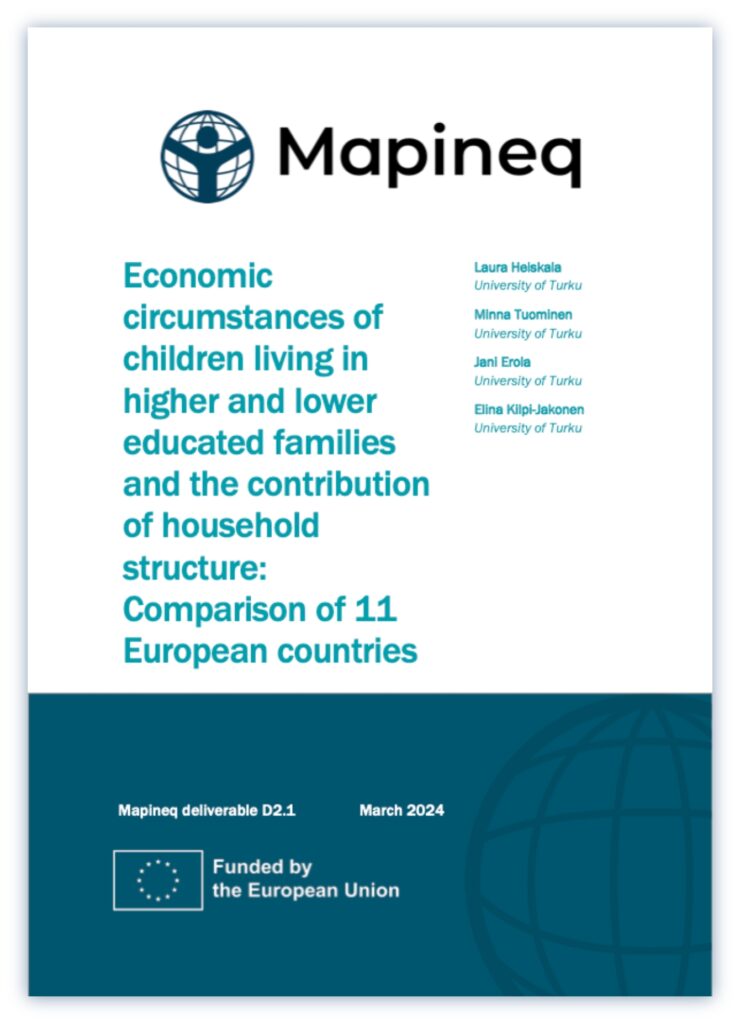Economic circumstances of children living in higher and lower educated families and the contribution of household structure: Comparison of 11 European countries
We study the contribution of household structure to the educational group income gap with cross-nationally comparable GGS data, including also regional information. We extend our perspective and unit of analysis from adults to children living in the households and study differences in children’s economic circumstances between higher and lower-educated families in multiple national and regional contexts. We aim to distinguish the contribution of household structure to the education group income gap and study whether there is geographical variation in how much this explains the education group differences in children’s economic circumstances. More specifically, we ask: 1) how much are the differences in economic circumstances of children living in higher and lower-educated households due to differences in household structure? And 2) does this vary between European countries and regions?
By Laura Hiskala, Minna Tuominen, Jani Erola and Elina Kilpi-Jakonen.

Across European countries, children living in highly-educated households live more often in two-adult families, have fewer siblings living with them, and their parents have been older when entering parenthood compared to others

In each country studied, children living in highly-educated households have better economic circumstances. There is more variation in the importance of education for the income gap across countries than across regions

Differences in economic circumstances between higher and lower educated families are partly explained by differences in the household structure

